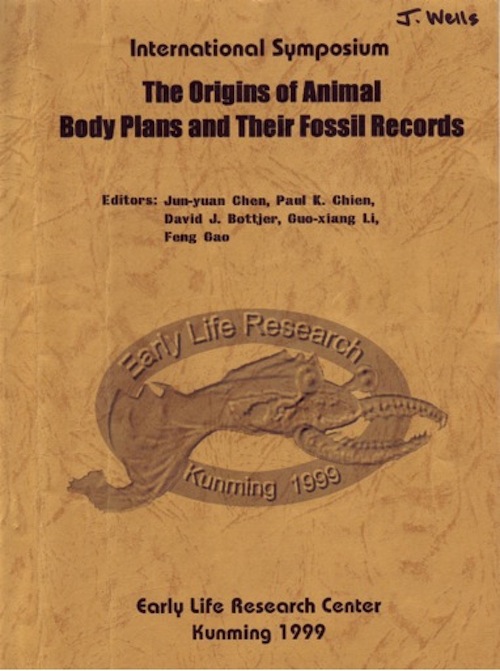 Evolution
Evolution
 Intelligent Design
Intelligent Design
"In China We Can Criticize Darwin": Prelude

Editor’s note: ENV is delighted to present in two parts Jonathan Wells’s account of the memorable 1999 International Symposium on the Origins of Animal Body Plans and Their Fossil Records, Kunming, China, the subject of recent Internet chatter. This is part one.
In February 1999, I had arranged for a talk at the University of Washington for Jun-Yuan Chen, a Chinese paleontologist who was an acknowledged expert on the Cambrian explosion — in which the major animal phyla appeared abruptly in the fossil record. Darwin had written in The Origin of Species that if his theory were true, “it is indisputable that before the lowest Cambrian stratum was deposited long periods elapsed… [in which] the world swarmed with living creatures.” Yet Darwin acknowledged that “several of the main divisions of the animal kingdom suddenly appear in the lowest known fossiliferous rocks.” Darwin called this a “serious” problem which “at present must remain inexplicable; and may be truly urged as a valid argument against the views here entertained.”1
The 1909 discovery of the Burgess Shale in the Canadian Rockies provided the best fossil record of the Cambrian explosion until the 1984 discovery of the slightly older Maotianshan Shales in Chengjiang, China. Because of their excellent preservation, the Chengjiang fauna (many of which were soft-bodied) document the Cambrian explosion in exquisite detail, and J.-Y. Chen was the world expert.2-3
In his February lecture at the Burke Museum of the University of Washington, Chen described many of the Chengjiang fossils and argued that their abrupt appearance in the early Cambrian was a problem for Darwinian evolution. Darwin’s theory predicts that minor taxonomic differences (such as species and genera) gradually evolve into larger differences (such as classes and phyla), whereas the fossils show that the phyla and many classes appeared first and then diversified into a variety of genera and species. Chen called this “top-down” evolution, to contrast it with the “bottom-up” evolution required by Darwin’s theory. Afterwards, scientists in the audience asked him a lot of questions about specific fossils, but they completely avoided the topic of Darwinian evolution. When Chen later asked me why, I told him that perhaps they were just being polite, because most American scientists disapprove of criticizing Darwinism. At that he laughed, and said: “In China we can criticize Darwin, but not the government; in America, you can criticize the government, but not Darwin.”
The following month I received an invitation from the Chinese Academy of Sciences to attend a conference in southern China organized by J.-Y. Chen and Paul Chien of the University of San Francisco (who was and is affiliated with the Discovery Institute).
More tomorrow.
NOTES:
(1) Darwin, The Origin of Species, Sixth Edition, pp. 285-287. Available online (2009) here.
(2) Chen, J.-Y., G.D. Edgecombe, L. Ramskald & G.-Q. Zhou, “Head Segmentation in Early Cambrian Fuxianhuia: Implications for Arthropod Evolution,” Science 268 (1995): 1339-1343.
(3) Chen, J.-Y., J. Dzik, G.D. Edgecombe, L. Ramskald & G.-Q. Zhou, “A possible early Cambrian chordate,” Nature 377 (1995): 720-722.
